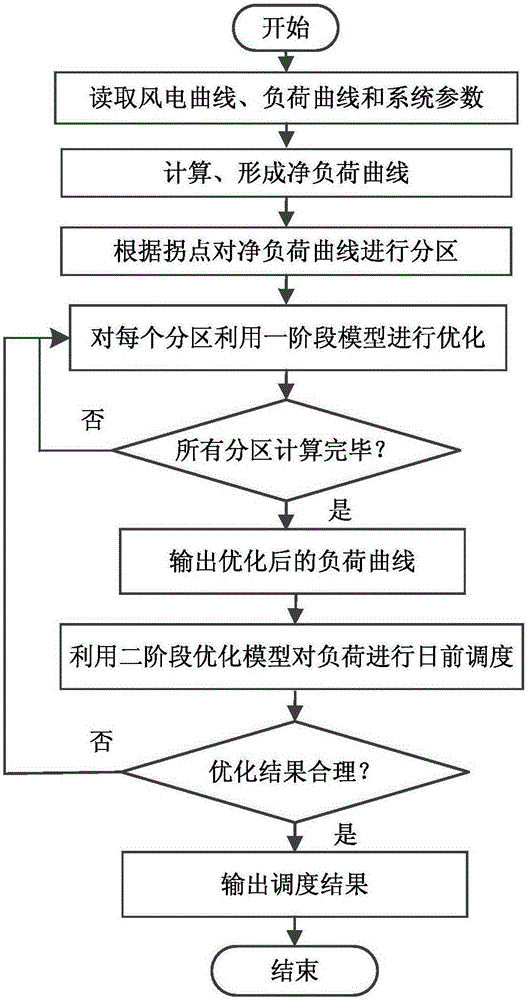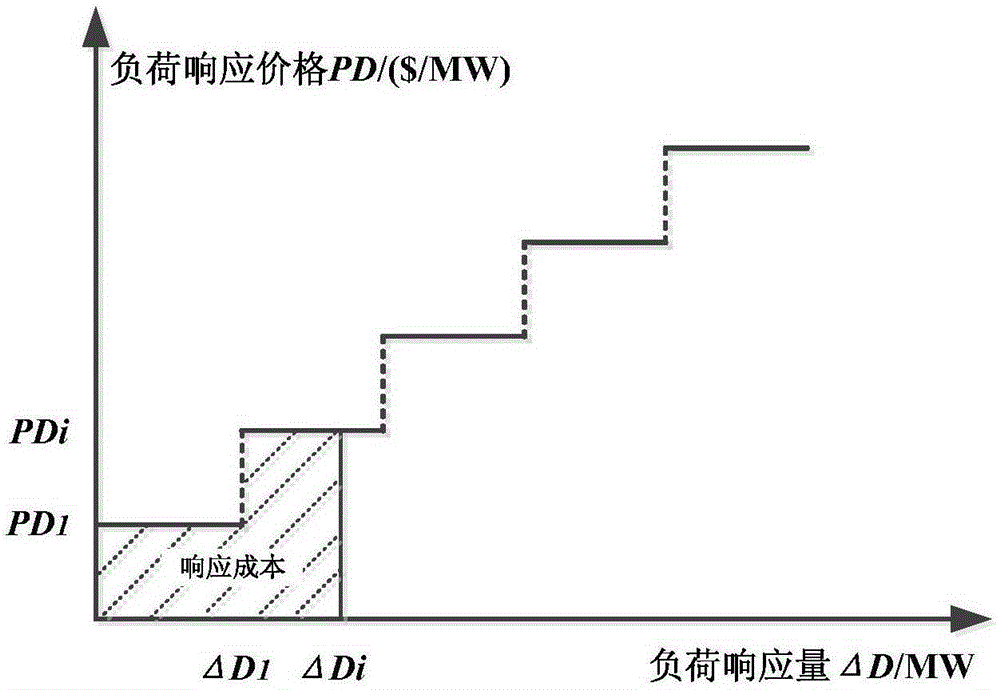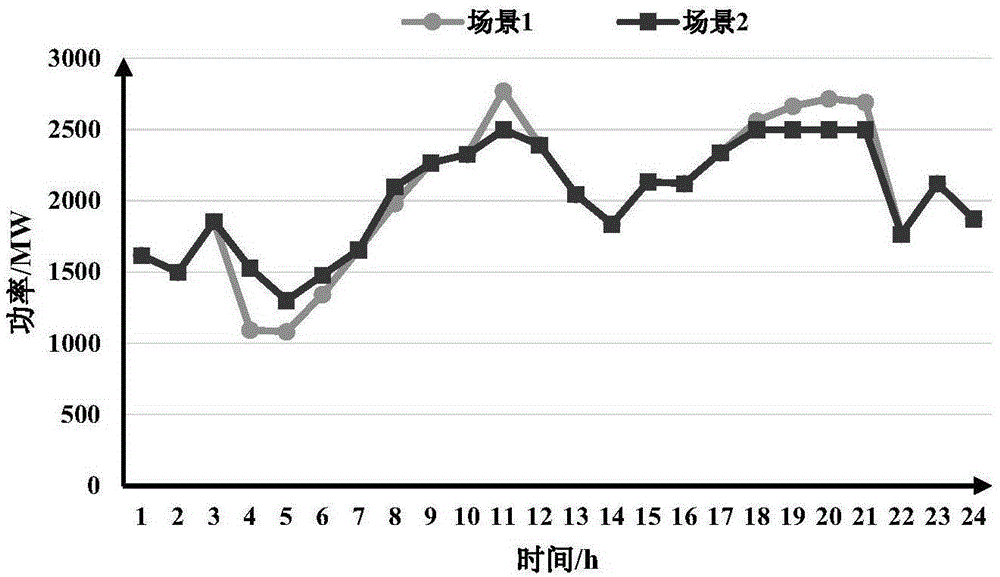Two-stage source-load dispatching method and device considering peak regulation and climbing requirements
A scheduling method and a technology for climbing requirements, which are applied in the direction of single-network parallel feeding arrangement, wind power generation, etc.
- Summary
- Abstract
- Description
- Claims
- Application Information
AI Technical Summary
Problems solved by technology
Method used
Image
Examples
Embodiment 1
[0047] A two-stage source-load scheduling method considering peak-shaving and ramp-up demands, see figure 1 , the scheduling method includes the following steps:
[0048] 101: Divide the net load curve according to the inflection point of the net load curve; analyze the peak-shaving demand of the power system and the climbing demand between each time period based on the net load curve;
[0049] 102: Optimizing the net load curve for each partition using a one-stage incentive demand response optimization model;
[0050] 103: When all partitions are calculated, output the optimized load curve;
[0051] 104: Based on the optimized load curve, use the two-stage scheduling model for day-ahead scheduling;
[0052] 105: When the optimal scheduling result is reasonable, that is, when all constraint conditions are met, the scheduling result is output, and the process ends.
[0053] Wherein, the scheduling method also includes:
[0054] When the calculation of all partitions has not...
Embodiment 2
[0063] The scheme in Embodiment 1 is described in detail below in conjunction with specific calculation formulas and examples, see the following description for details:
[0064] 201: Read wind power forecast output, load and power system data; subtract the power system day-ahead load forecast curve from the wind power forecast curve to obtain the net load curve of conventional thermal power units; divide the net load curve according to the inflection point of the net load curve; Analyze the peak-shaving demand of the power system and the climbing demand between each time period based on the net load curve, and calculate the peak-to-valley difference of the net load curve and the climbing demand of each time period and each partition;
[0065] 202: Optimizing the net load curve for each partition using a one-stage incentive demand response optimization model;
[0066] Among them, the net load curve of the large-scale wind power system is optimized and corrected. While reducing...
Embodiment 3
[0121] Combined with the following specific tests, the attached image 3 To verify the feasibility of the scheme in Examples 1 and 2, see the following description for details:
[0122] Taking the IEEE36 node 10-machine power system as an example, the wind power with an installed capacity of 600MW is connected, and the upper and lower limits of demand response are plus or minus 15% of the maximum load. Two scenarios are set, Scenario 1 is scheduling without considering demand response and only considering the two-stage scheduling model in step 204; Scenario 2 is considering demand response, using the two-stage optimization model in steps 202 and 204 for optimization. Comparison and reference of power system net load curves in two scenarios image 3 , the comparison of optimization results in the two scenarios is shown in Table 1:
[0123] Table 1 Comparison of optimization results in different scenarios
[0124]
[0125] Depend on image 3 It can be seen that comparing ...
PUM
 Login to View More
Login to View More Abstract
Description
Claims
Application Information
 Login to View More
Login to View More - R&D
- Intellectual Property
- Life Sciences
- Materials
- Tech Scout
- Unparalleled Data Quality
- Higher Quality Content
- 60% Fewer Hallucinations
Browse by: Latest US Patents, China's latest patents, Technical Efficacy Thesaurus, Application Domain, Technology Topic, Popular Technical Reports.
© 2025 PatSnap. All rights reserved.Legal|Privacy policy|Modern Slavery Act Transparency Statement|Sitemap|About US| Contact US: help@patsnap.com



